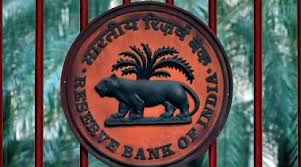
RBI Board Reviews Economic Capital Framework; Government Dividend Could Increase Up to ₹3 Lakh Crore

 :
| Updated On: 16-May-2025 @ 1:48 pm
:
| Updated On: 16-May-2025 @ 1:48 pmSHARE
The Reserve Bank of India’s (RBI) Central Board of Directors met on Thursday to conduct a comprehensive review of the Economic Capital Framework (ECF), a crucial mechanism used to determine the quantum of risk provisioning and the distribution of surplus funds by the central bank to the Government of India. This review is significant because it directly influences how much of the RBI's surplus income — generated through its investments, currency issuance, and other central banking operations — is transferred as a dividend to the government.
The Economic Capital Framework was first introduced in 2019, based on the recommendations of a committee headed by former RBI Governor Bimal Jalan. The objective was to establish a transparent and rule-based approach for determining the appropriate levels of risk buffers and the surplus that can be transferred without compromising the central bank's financial stability.
Based on the ECF principles, the RBI makes an annual transfer of surplus (or dividend) to the central government. These transfers are an important non-tax source of revenue for the government, helping to manage fiscal deficits and fund key expenditures. For the financial year 2023-24, the RBI made a record-high transfer of ₹2.11 lakh crore — the largest ever in its history — to the government, exceeding earlier projections and providing a significant boost to the central finances.
Now, according to various estimates and sources familiar with the matter, the surplus transfer for the fiscal year 2024-25 could potentially rise even further, ranging between ₹2.5 lakh crore to ₹3 lakh crore. If these projections hold true, it would mark another record in terms of dividend payouts by the central bank. The anticipated increase may be attributed to higher income from investments, both domestic and foreign, a stable macroeconomic environment, and improved financial performance of the RBI.
The surplus from RBI helps the government manage its fiscal policy more effectively by providing additional fiscal space. This is particularly crucial in a year where economic uncertainties and global headwinds may affect tax revenues or necessitate increased public spending. An increase in RBI’s dividend could therefore reduce the government's borrowing requirements and interest burden.
The final decision on the amount to be transferred will be influenced by a variety of factors, including global financial market trends, domestic economic conditions, the RBI’s own balance sheet strength, and recommendations from the ECF review.
In conclusion, the RBI's review of the Economic Capital Framework signals a proactive approach to fiscal prudence and central bank independence, while also preparing the groundwork for what could be the largest-ever dividend transfer to the Government of India. This transfer will likely play a key role in shaping the Union Budget for 2025-26 and supporting the government's economic agenda.